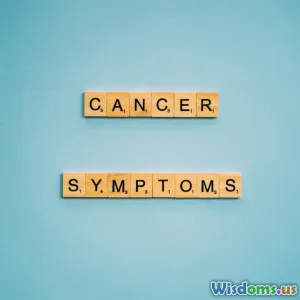
Expert Tips to Spot Early Signs of Illness in Aquarium Fish
8 min read Discover expert strategies to detect early signs of illness in aquarium fish, ensuring healthier aquatic friends and avoiding costly treatments. (0 Reviews)
Expert Tips to Spot Early Signs of Illness in Aquarium Fish
Aquarium fish owners often find themselves mesmerized by the grace and beauty of their aquatic pets. But beneath those shimmering scales lies a vulnerable ecosystem where illness can develop quickly and silently. Spotting the early signs of illness in aquarium fish is not just a matter of preserving the aesthetic appeal—it’s crucial for saving lives and maintaining a healthy tank environment.
This comprehensive guide dives deep into the expert methods and insights to help fishkeepers detect illness at its inception, ensuring timely intervention and a thriving aquarium.
Why Early Detection of Illness Matters
Fish are masters at hiding pain and sickness, an evolutionary trait that makes them seem healthier than they may be. By the time visible signs become obvious, the disease may have advanced to a stage where treatment is less effective or the fish is less likely to recover. This can also place the entire tank community at risk.
Experts agree that early detection improves survival rates dramatically. Dr. Emily Stanton, a marine biologist and aquarium health specialist, notes,
"Proactive monitoring allows for early diagnosis. Even subtle changes can provide clues that save not only an individual fish but the whole ecosystem in a tank."
Moreover, treating diseases early often means less chemical intervention, reducing stress for your aquatic pets and preserving water quality.
Key Signs of Illness in Aquarium Fish
Monitoring your fish consistently with a keen eye for specific behavioral and physical changes is essential. Here are detailed signs to look out for:
1. Behavioral Changes
Fish behavior can be the first and most telling indicator of trouble.
- Lethargy and Reduced Activity: Healthy fish are usually active and curious. A sluggish fish resting in corners or hiding constantly may point to illness.
- Loss of Appetite: Noticeable refusal to eat or sudden change in feeding patterns is often the first sign.
- Erratic Swimming: Erratic movements, such as spinning, swimming upside down, or darting frantically, suggest neurological or internal problems.
- Isolation: In species that are normally social, isolation or separation from the group is suspicious.
2. Physical Symptoms
Close inspection reveals many telling signs on your fish’s body:
- Discoloration: Fading or unusual darkening of colors can suggest stress or disease. For example, a healthy Betta’s vibrant hues dull during illness.
- Spots and Lesions: White spots often signify Ichthyophthirius (Ich), while red streaks or bloody areas can indicate bacterial infections.
- Fins Damage: Torn, clamped, or ragged fins often point to fin rot or aggression-related injuries.
- Bloating or Weight Loss: Abnormal swelling (dropsy) or guppy “skinny disease” reveals serious conditions.
- Gills: Gasping at the surface, rapid gill movement, or inflamed gills might indicate poor water quality or infection.
3. Environmental Indicators
Fish illness is frequently tied to the tank’s environment:
- Water Quality Changes: High ammonia, nitrite spikes, or low oxygen levels stress fish, weakening their immune response.
- Temperature Fluctuations: Sudden changes can trigger susceptibility to disease.
- Tank Hygiene: Accumulated waste and unclean substrates foster harmful bacteria growth.
Techniques to Monitor Fish Health Effectively
Routine Observations
Daily observation at feeding times is recommended. Use these approaches:
- Scheduled Checklists: Keep a log of daily behavior, appearance, and feeding to spot trends.
- Use a Journal or App: Apps designed for aquarium maintenance allow tracking symptoms and water stats.
Photographic Records
Taking periodic photos helps compare your fish over time. Small changes in color or fin shape become unmistakable.
Water Testing
Testing water parameters twice weekly—or more for sensitive species—provides early warnings. Reliable test kits measure pH, ammonia, nitrites, nitrates, and dissolved oxygen.
Common Diseases and Early Signs to Watch
Understanding prevalent illnesses can guide vigilant observation:
- Ichthyophthirius (Ich): Small white spots resemble sugar grains, with fish scratching on surfaces.
- Fin Rot: Fins appear ragged and bite marks are visible as red or white edges.
- Velvet Disease: A fine gold or rust-colored dust coating fish, combined with labored breathing.
- Dropsy: Swollen body and scales sticking out like a pinecone.
- Fungal Infections: Cotton-like growths usually start at injury sites.
According to a 2021 study in the Journal of Fish Diseases, early treatment within 24-48 hours of symptoms appearing notably increased survival rates for common freshwater fish diseases.
Practical Tips for Preventing Illness
Prevention is always more effective than cure:
- Quarantine New Fish: Isolate newcomers for 2-4 weeks to detect latent diseases before introducing to the main tank.
- Maintain Stable Water Conditions: Regular partial water changes ensure optimal parameters.
- Balanced Diet: Provide species-appropriate nutrition to build immune strength.
- Clean Environment: Remove uneaten food and debris daily.
- Use UV Sterilizers: These help reduce pathogens circulating in tank water.
Dr. Stanton recommends,
"Treat your aquarium more like a sealed ecosystem—balance and stability are key to preventing stress-related diseases."
When to Seek Professional Help
If early signs persist despite ideal care, consulting a veterinarian specializing in aquatic animals is crucial. Some infections require prescription medications or advanced diagnostics.
Being able to provide clear symptom history and water parameters is invaluable for veterinarians.
Conclusion
Mastering the art of spotting early signs of illness in aquarium fish transforms aquarium keeping from reactive to preventive care. By understanding behavioral cues, physical symptoms, and environmental factors, aquarists can save their fish from severe illnesses and expensive treatments.
Building keen observational habits, maintaining a clean stable environment, and acting promptly at the first sign of trouble can turn your aquarium into a vibrant, healthy hobby haven.
Remember, your attentive eyes and informed care are the best defenses your fish have against disease.
Further Reading & Resources
- Fish Disease: Diagnosis and Treatment, by Edward J. Noga
- American Veterinary Medical Association – Aquatic Animal Resources
- Practical Fishkeeping Magazine
- FishLab’s Disease Identification Guide
Embark on this vigilant journey as a fishkeeper and let your fish flourish in wellness and vitality.
Rate the Post
User Reviews
Popular Posts


















